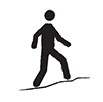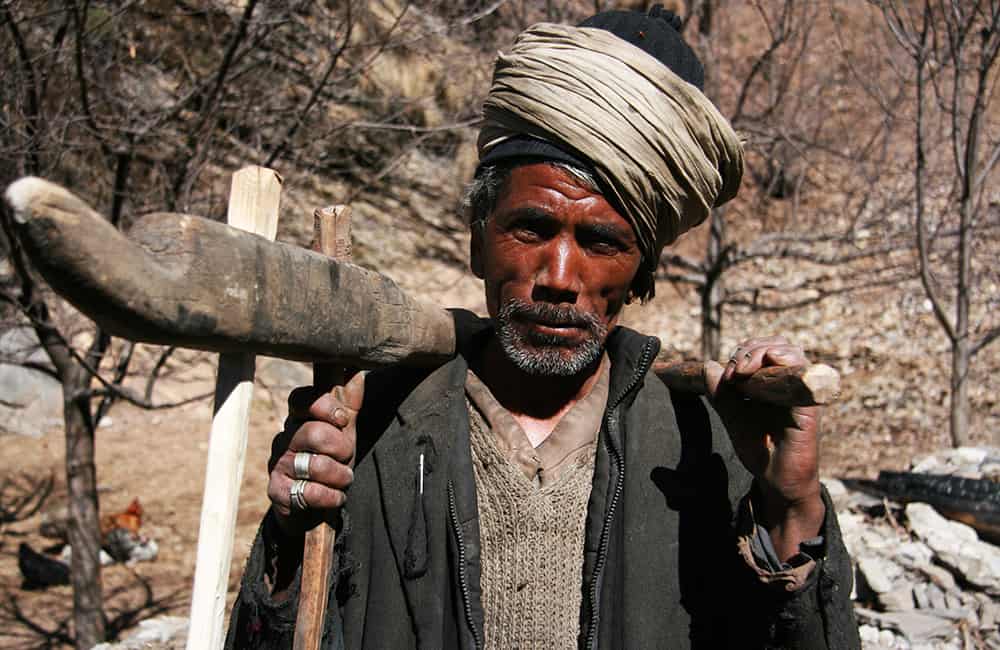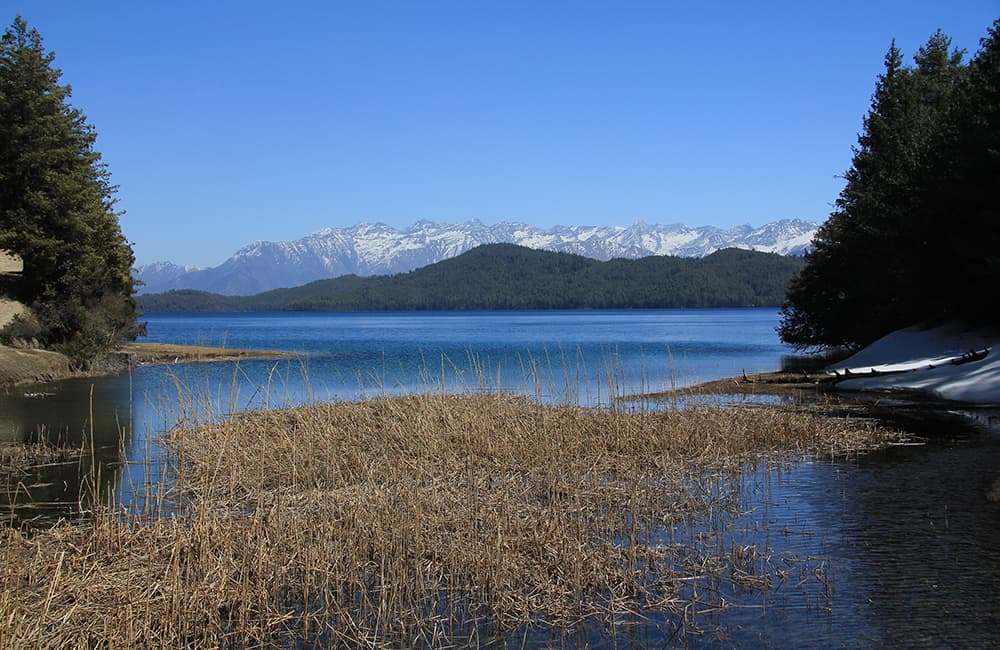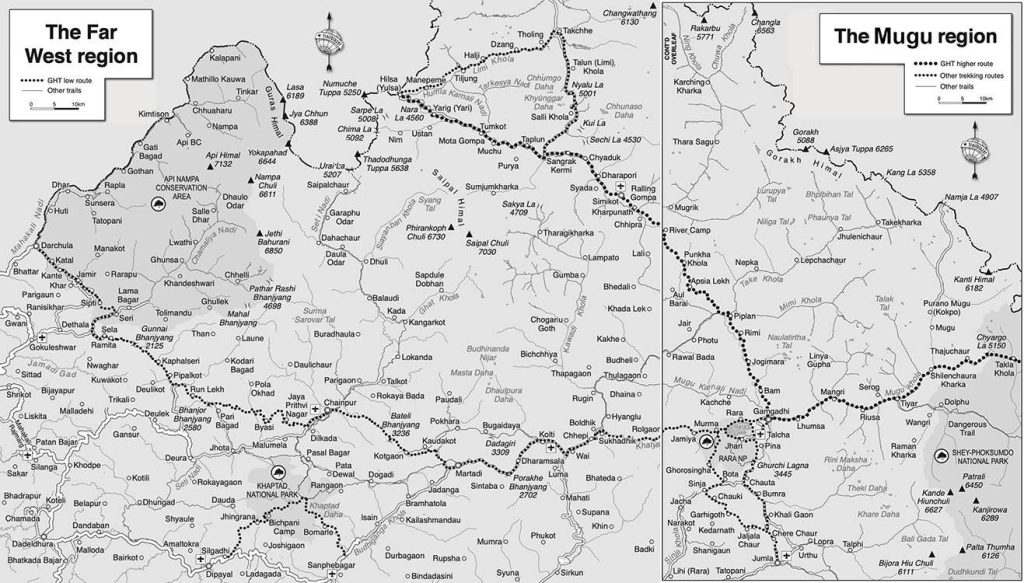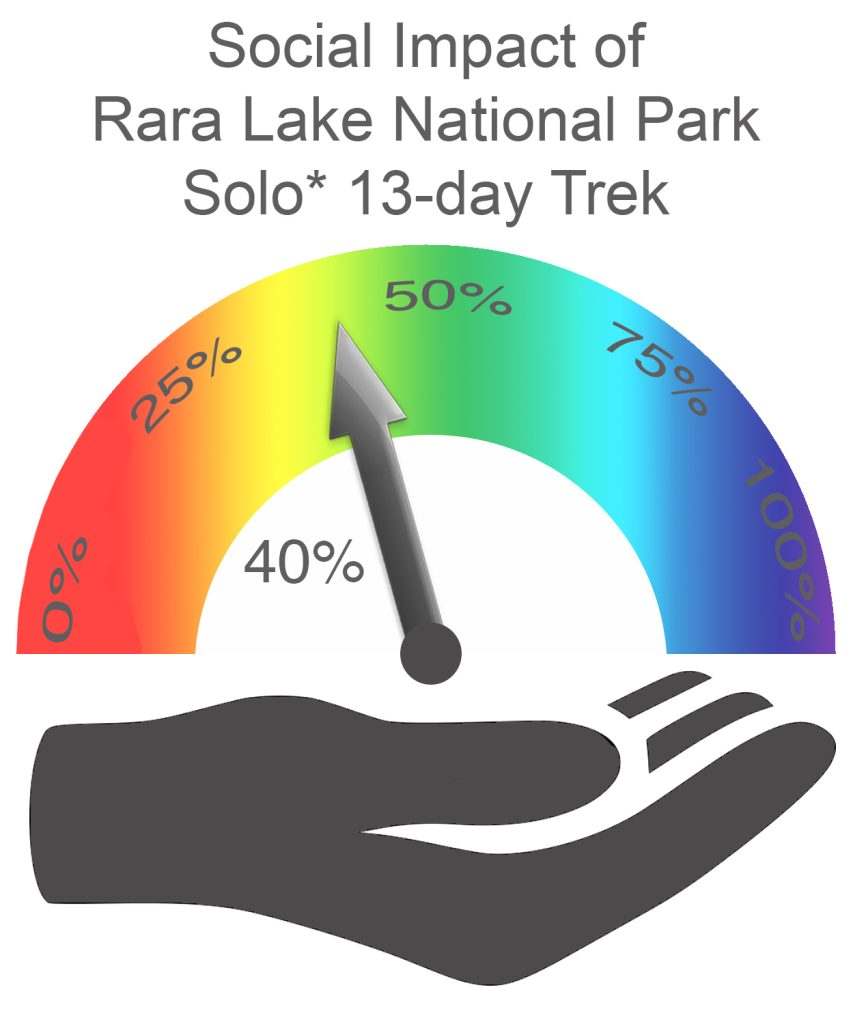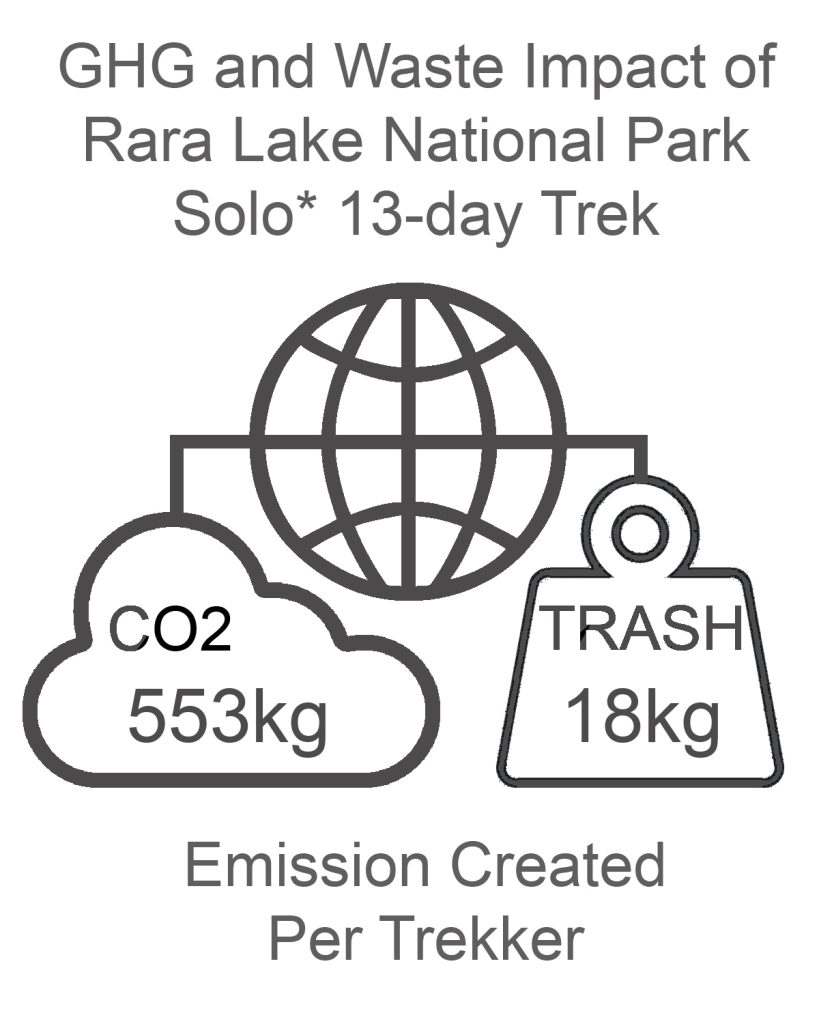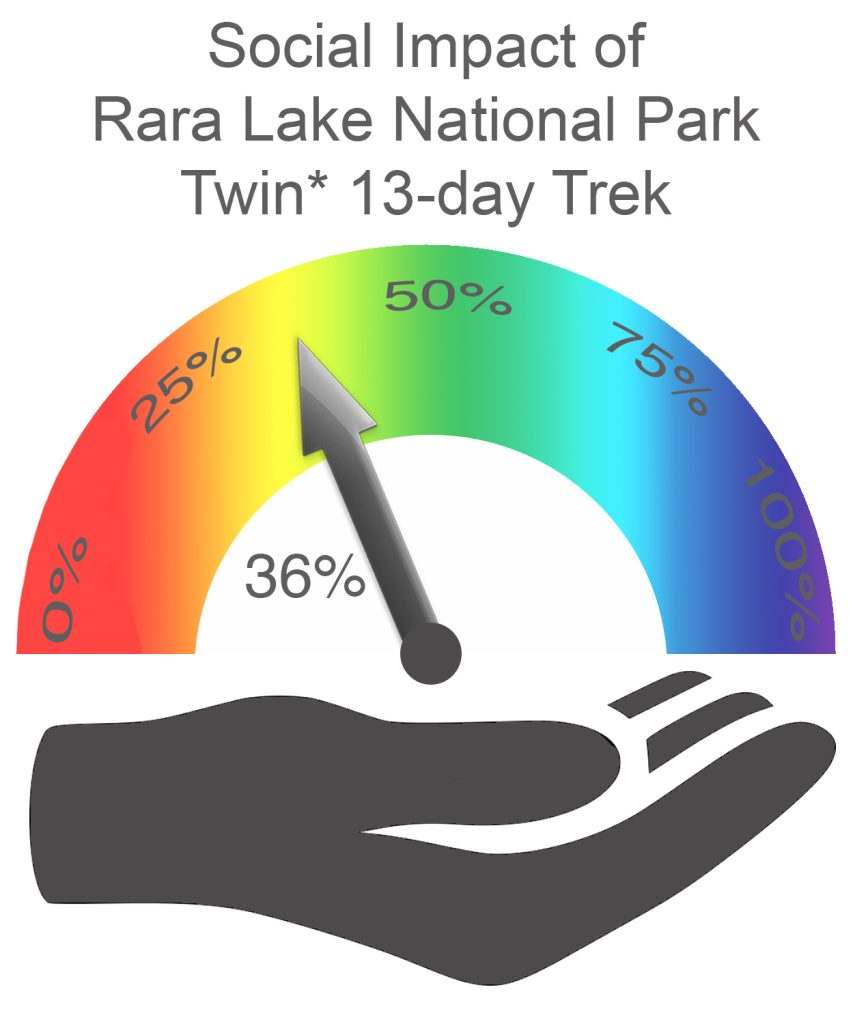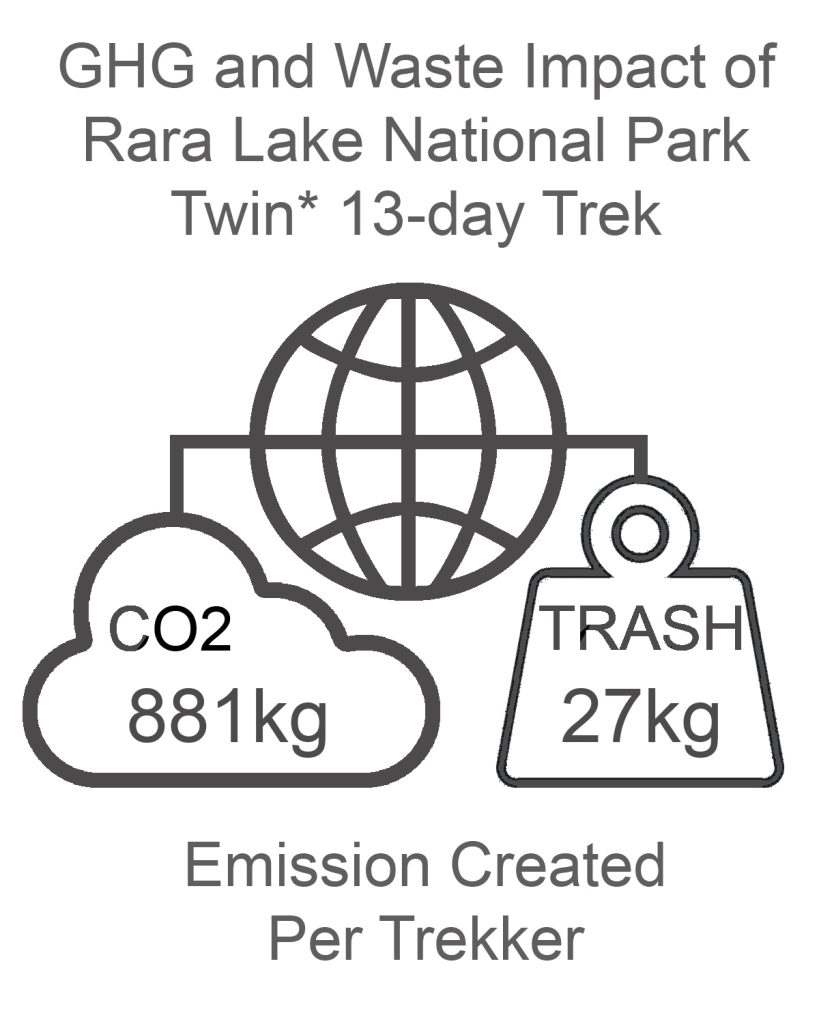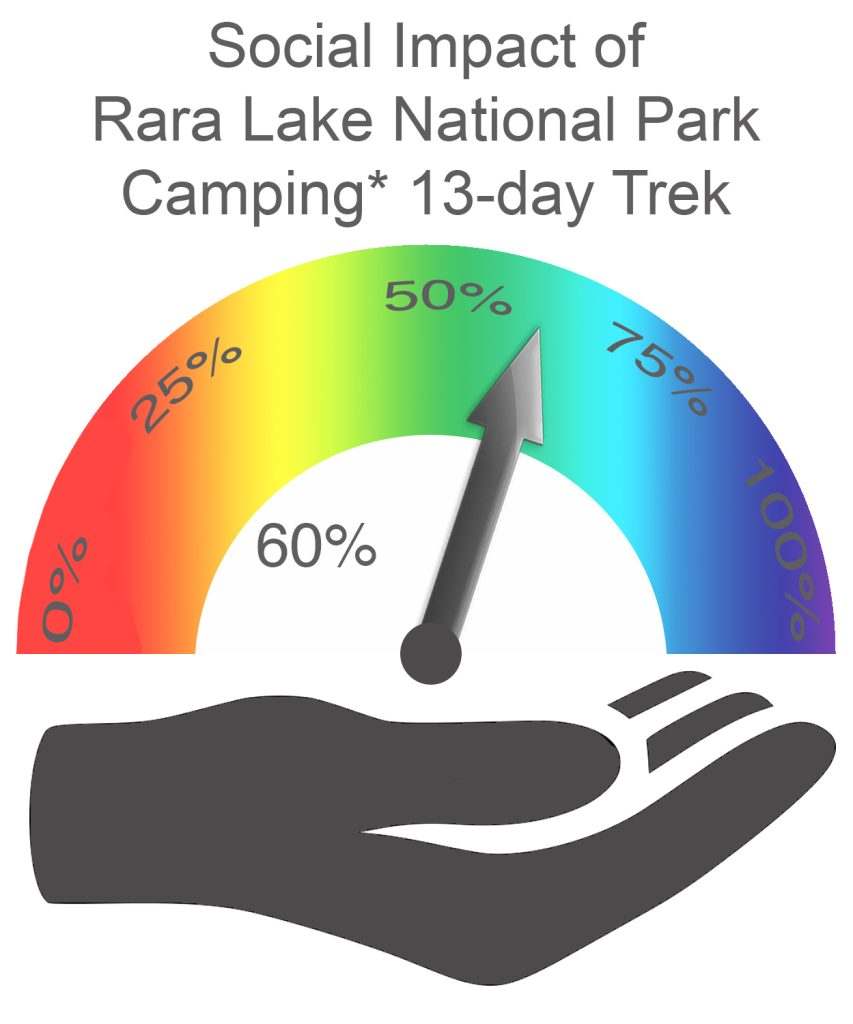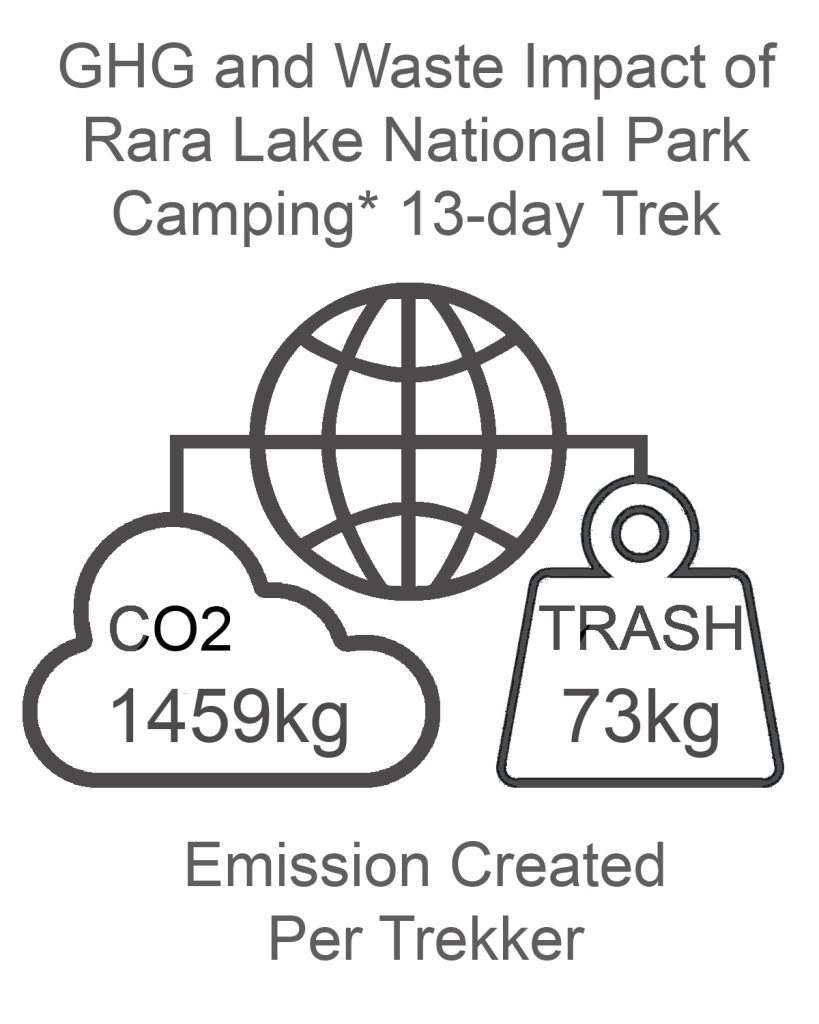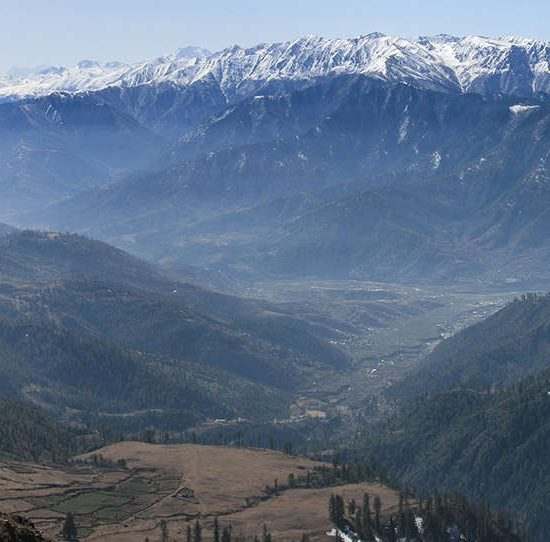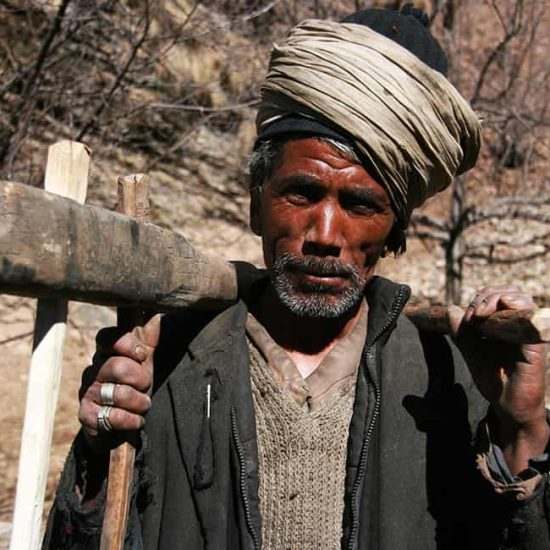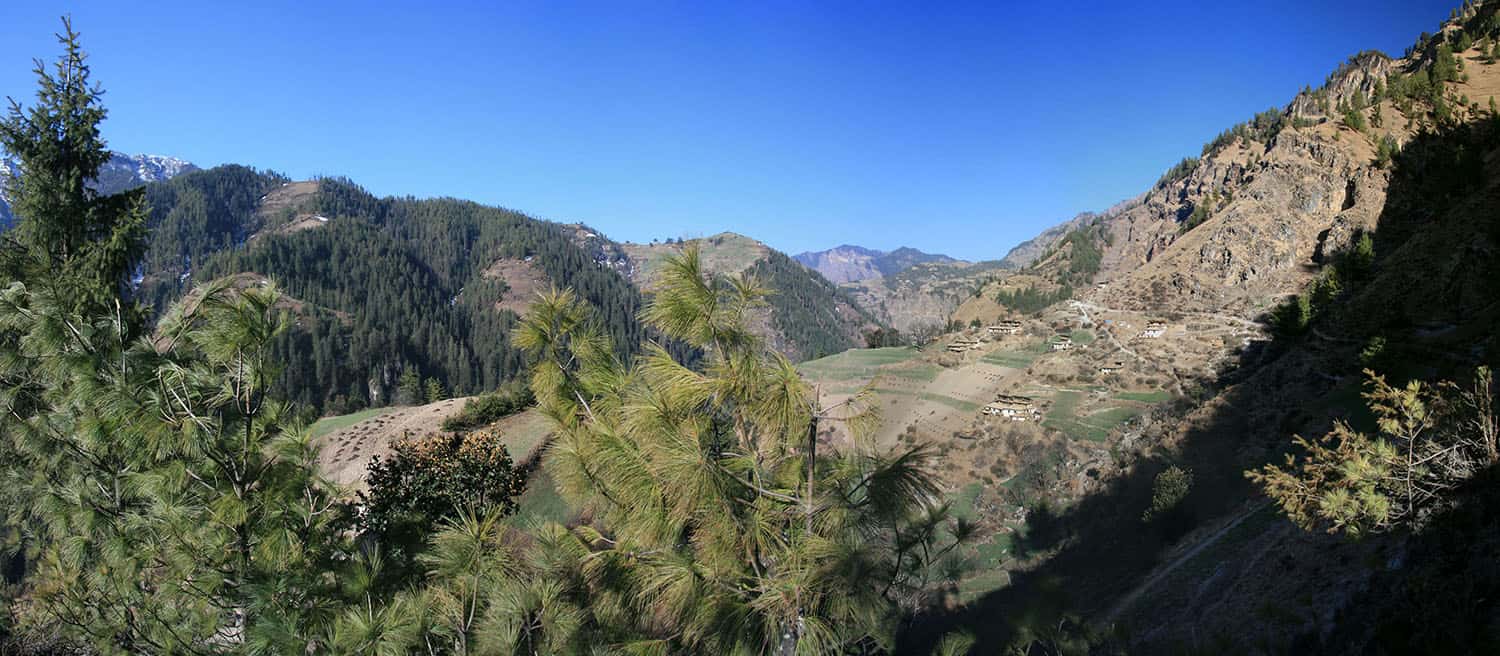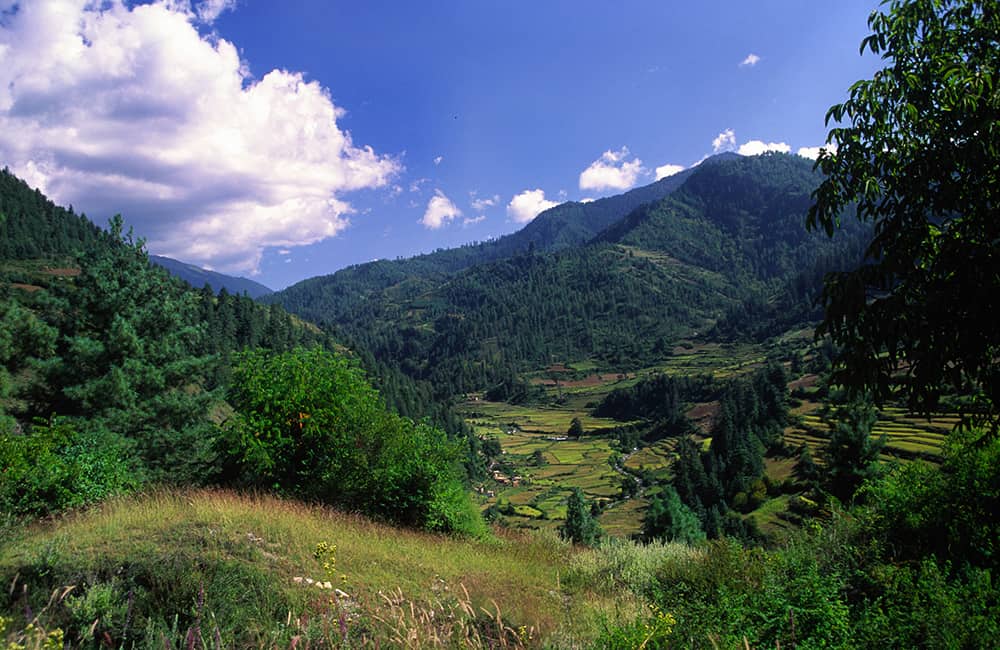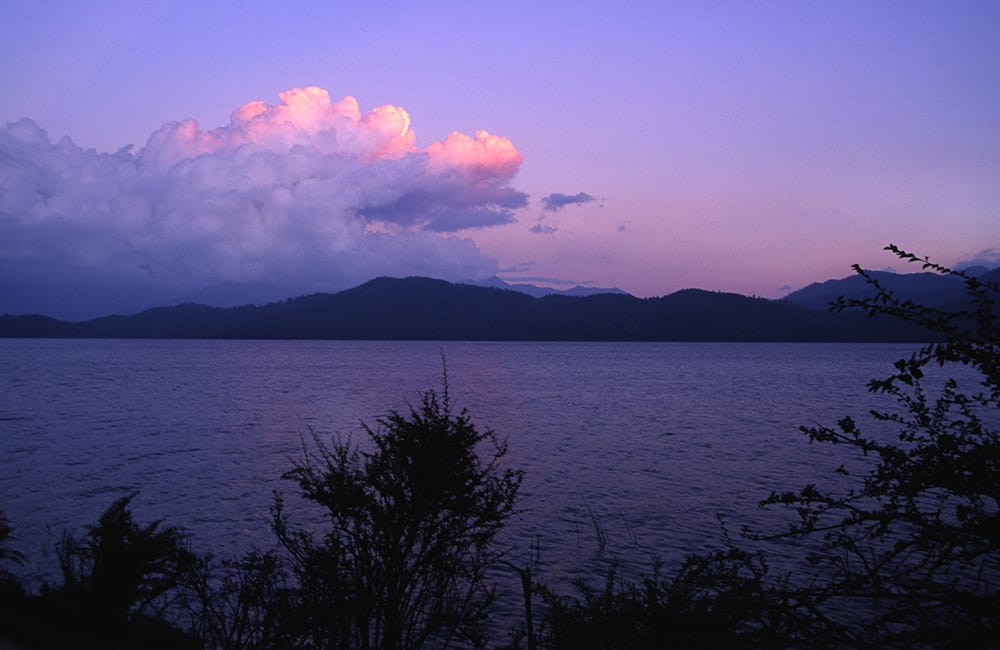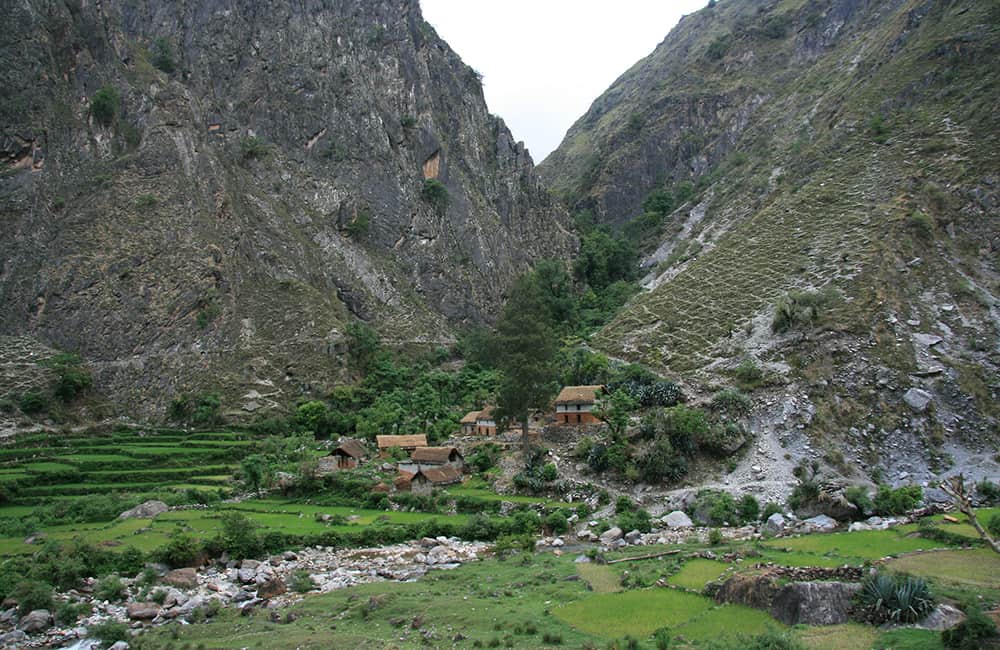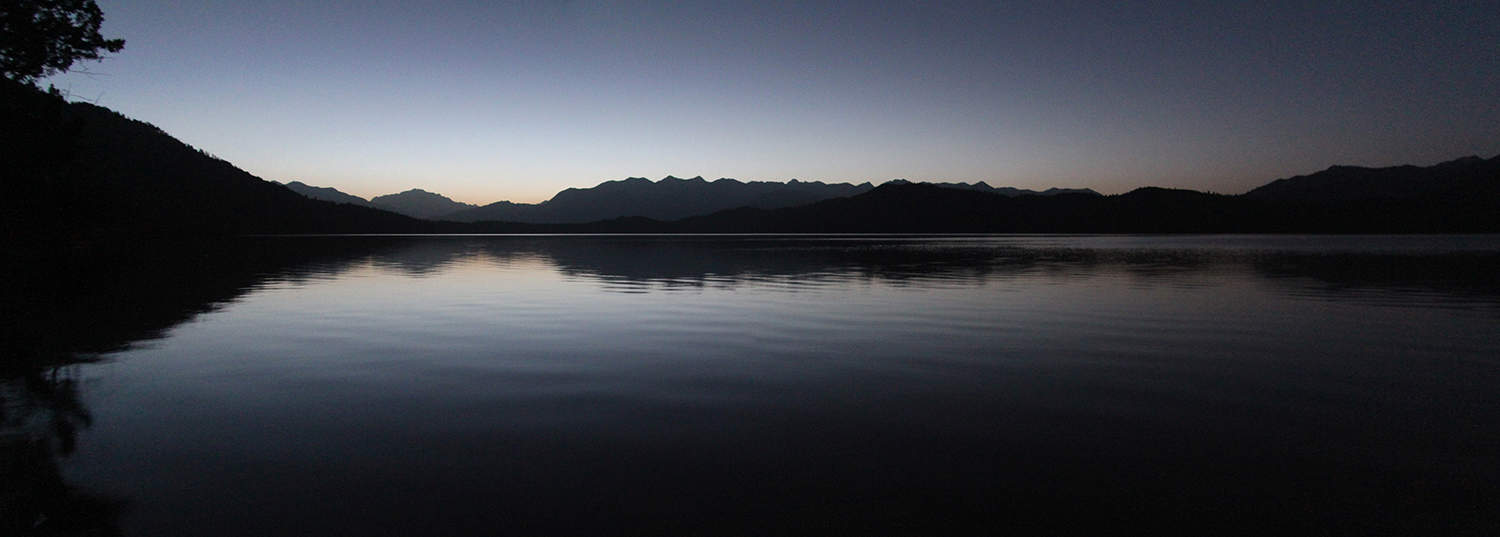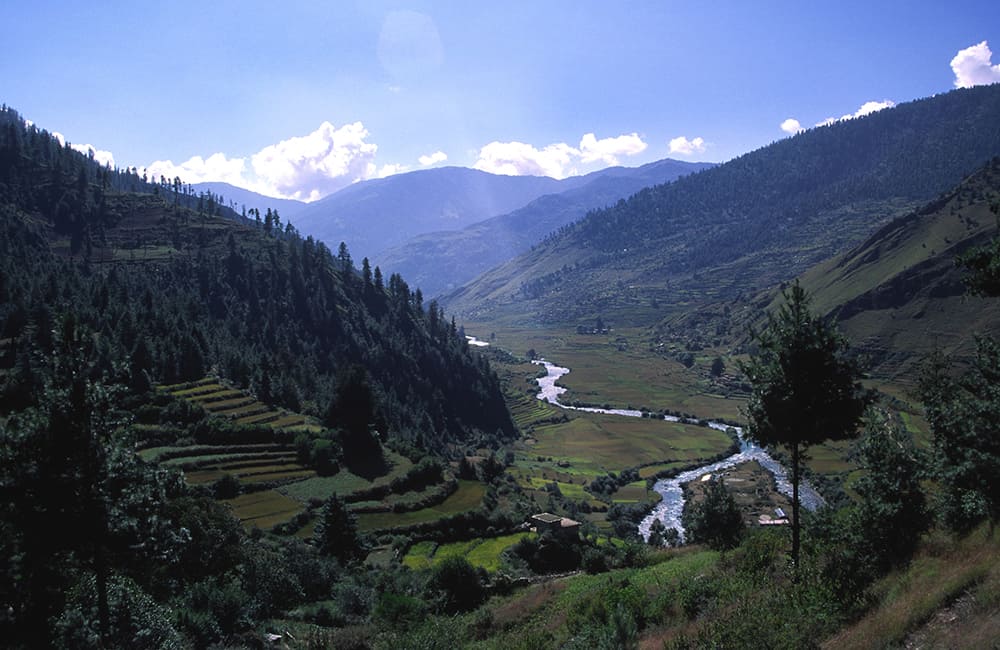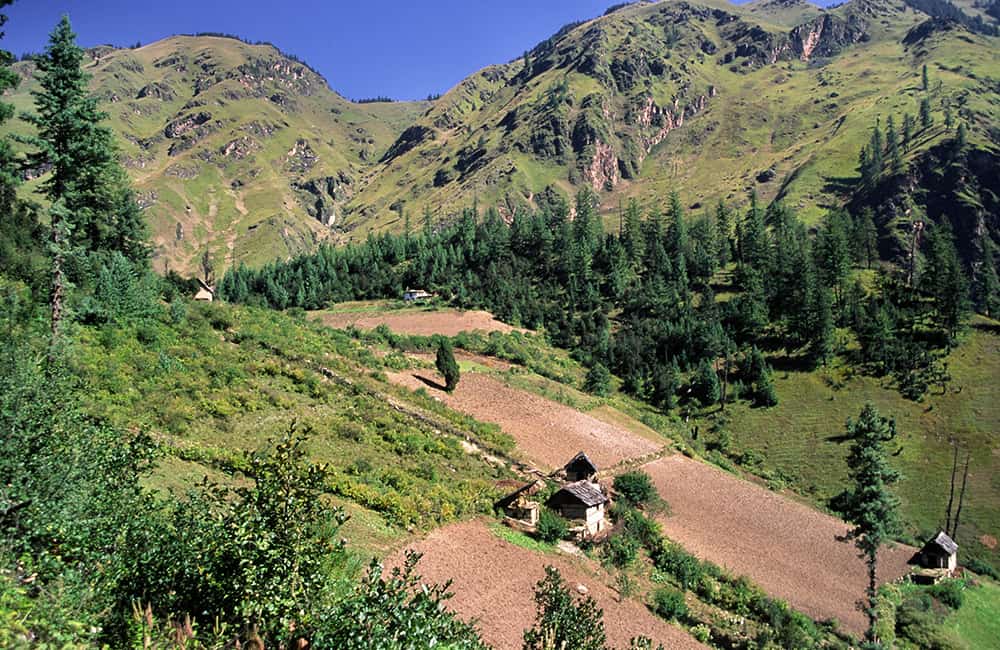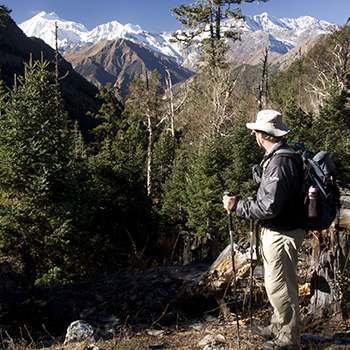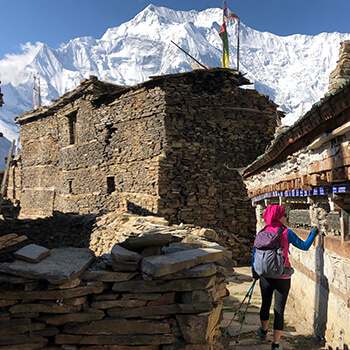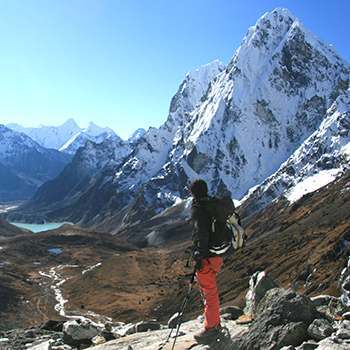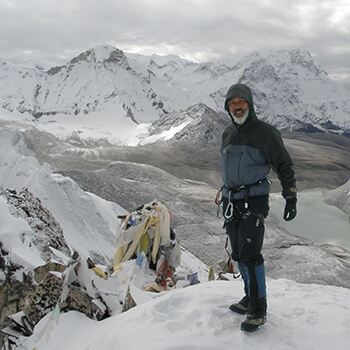1
Day 1: Kathmandu–Nepalgunj all day
As the flight from Nepalgunj (150m) to Jumla (2540m) leaves before any flights from Kathmandu arrive, you will have to overnight in Nepalgunj. There are some hotels in town and a few, more basic places to stay near the airport. Whichever option you choose it is advisable to book in advance, as they are frequently busy. There isn’t much to see or do in Nepalgunj so most airlines recommend that you book a mid-afternoon flight.
2
Day 2: Nepalgunj–Jumla
As if to make up for the inconvenience of having to overnight in Nepalgunj, the flight to Jumla (2540m) is terrific. First you cross the Nepali terai, covered in dense jungle, before climbing over the pahar of west Nepal. Vast forests pass under the wings; this is one of the least densely populated areas of the Himalaya, aside from the very highest mountain regions. The approach to Jumla involves a diving 180° turn over a forested ridge to the airstrip; it’s quite a thrill!
Once outside the airport, there are a couple of teahouse-style hotels, or you can head into the main bazaar where there is more accommodation. To get to the main bazaar, head west (turn right out of the gate) and follow a large, dusty trail to Jumla, which is about 15 minutes away. The centre of town, called Khalanga Bazaar, is paved in large flagstones and is a busy trading post for the region. Beyond the many shops are two interesting Hindu temples, Chandan Nath, which commemorates the yogi who introduced rice farming to the valley some 900 years ago and is dedicated to Vishnu, and Bhairavnath, a newer temple dedicated to Shiva. These temples were built at the beginning of the Malla Empire, a Khas dynasty that dominated western Nepal, Tibet, Ladakh and Kashmir for centuries, see Khas People in Ethnic Groups.
A strong wind blows through the valley in the afternoons, so if you arrive early enough it is a good idea to complete tomorrow’s trek.
3
Day 3: Jumla–Chere Chaur 4½hrs
Head due north from Khalanga Bazaar, following a large trail into a shallow valley and towards Karnali Technical College. The trail is lined by buildings for the first hour and remains on the true right (west) side of the valley. When you reach a section of trail with fields on either side you will come to a bridge to the true left (east) bank. Cross the bridge, turn left and continue towards a large tank of water before the technical college (30 mins). The trail winds around the college and then begins to climb an easy gradient on a trail with little shade for 3 hours to Chere Chaur (3055m). This is a large, grassy plateau and makes an excellent campsite with views back down the valley to Jumla.
4
Day 4: Chere Chaur–Chalachaur 5hrs
At the northern end of the plateau the trail forks; you need to turn left and enter a pine forest.
Note: the right fork enters a short section of forest before climbing an exposed hillside to Danphe Lekh pass (3685m), which you will cross on the return to Jumla.
Having turned left, the trail climbs steadily as it contours around the top of a small river basin to a couple of buildings at Chor Khola (3170m, 45 mins). From here, the trail climbs steeply through forest to the upper pastures of the Dori Lekh and Jaljala La (3585m, 2½hrs). An easy descent on the north side of the pass soon brings you to a broad grassy pasture, Jaljala Chaur (3420m, 30 mins). To reach the few buildings on the far side of the pasture continue along the northern treeline to a trail that crosses a small bridge over a stream. If you take any of the earlier, direct routes, you will have to wade a number of small streams and cross boggy ground. Camp on a patch of cleared ground in front of the buildings should you want to stay here.
From the buildings the trail descends rapidly through forest into the Jaljala Khola valley, where there is a good campsite at Chalachaur (2980m, 1¼hrs).
5
Day 5: Chalachaur–Sinja 4½hrs
You are now in a fine deciduous forest with the sparkling Jaljala Khola leading the way. Cross the river several times, over bridges with traditional carvings on the handrail supports. After 45 minutes a large tributary valley merges from the right and the first small plots of farmland appear. The trail now remains on the true left (south) side of the valley, and climbs a small spur before continuing to descend an easy gradient. As the valley broadens the terraces of smallholdings appear and you pass through the scattered settlement of Garhigoth (2740m, 2hrs). The next settlement, Chauki (2500m, 1hr), is a larger Thakuri village with its distinctive red- and white-painted homes. Walking through the village you are able to see the end of the valley ahead, and a rocky promontory with commanding views. The trail winds around the southern base of the promontory and then drops to a bridge across the outflow of the Jaljala Khola to a peninsula with the Sinja Khola on the far side. Camp on the peninsula next to the health post (2405m, 45 mins), the main part of the village is on the far side of the valley and can be reached by another bridge.
6
Day 6: Sinja all day
The promontory that you passed the previous day is a very important site in medieval Nepali history. The western hills of Nepal were once the centre of the largest kingdom ever seen in the Himalaya, prior to the unification of Nepal: the first Malla Empire, and the winter capital was here, at Sinja. The only remains are some ruins of the royal palace and the ancient Hindu Kankasundri Temple on top of the promontory, called Lamathada. Two large stone lions at the entry of the temple are certainly from the right period, but identifying other artefacts within the temple is impossible. Throughout the region are many stone pillars, or stele, that declare land ownership changes, or places of historical interest, but they nearly all date from the 17th century onwards. From the top of Lamathada you look down into a deep ravine to the west, and some caves on the far bank, where the 5th Dalai Lama is said to have meditated. The old border with Tibet is not far away, in the Mugu Karnali Nadi valley, and local legends tell of a time when Sinja was the most important place in the Himalaya ranges. To the south-east, about 5 hours’ walk away is a large cave, where locals believe the five Pandava brothers (from the Hindu epic, the Mahabharata) were exiled. An annual horse race, in July, is held from Lamathada to the cave and back.
The local people call themselves Thakuri, a noble Chhetri caste, which means you will probably not be invited into homes.
7
Day 7: Sinja–Ghorosingha 4hrs
From the campsite, cross the suspension bridge to Sinja village but turn right (not left to the village) and follow a dirt trail that climbs a little as it heads through the gorge behind Lamathada. From the gorge it is easy to see why Lamathada was such an obvious choice for a fort palace, any attacker from here would have no chance of success. Continue on the north bank of the Sinja Khola along a trail that continues to climb, do not take any smaller routes that descend to the riverside. After 1½ hours you should reach the outlying homes of Bhota at the entrance of the Ghatta Khola valley (2600m). Unless you want to detour to the main part of the village stay on the true right (west) bank of the river. A detour to the village, which is on the true left (east) bank of the river, will add 45-60 minutes to your day. At the trail junction to Bhota take the left hand, smaller track and begin ascending the Ghatta Khola.
The valley soon narrows and climbs steeply up an exposed trail that passes many grinding wheels. At the top of the ancient moraine wall (3050m, 2½hrs) you are greeted with a meandering stream flowing through a broad grassy valley, and perhaps one of the most inviting campsites you will ever come across, Ghorosingha.
8
Day 8: Ghorosingha–Rara Lake 6¼hrs
The trail now winds through beech and pine forest as it continues to ascend the valley. After 40 minutes you will pass some derelict buildings. Climbing further the valley forms a grassy basin and then the river turns sharply to the north-west (right) into a much narrower gorge. Continue along the true right (north) side of the boulder-filled valley to the bottom of a steep switchback trail that climbs to a saddle on the Chuchuemara Danda (3804m, 2¼hrs). Traverse the northern slope to your right on a small but defined trail to a ridge (3756m, 30 mins) overlooking Rara Lake, which makes an ideal lunch spot if the weather is clear. The trail now descends, slowly at first, but more steeply once you enter rhododendron forest for 1½ hours to the main track along the Khatyar Khola (2965m). Cross a wooden bridge to the true right bank of the river, where you turn right to Murma and then ascend an easy gradient to the western end of Rara Lake (3010m, 30 mins). The main campsite (45 mins) is beside the National Park office on the northern shore of the lake, you will have to register here as well.
9
Day 9: Rara Lake all day
Rara Lake is an idyllic place; the astoundingly clear water surrounded by protected forest is a nature-lover’s dream. A walk around the rim of the lake (13km, 5½hrs) is really worth the effort – see if you can spot the stele marking the cardinal points, nobody knows how or why they are here.
On the north-eastern bank is Rara Mahadev Temple, decorated with woodcarvings of elephant, peacock and people. On the full moon in July/August locals gather here to honour the god Thakur, who, legend says, created the lake by firing an arrow at the western shore and then built the eastern bank by stamping down the earth. Swirling rock formations at the eastern end of the lake are said to be his footprints. There are some old canoes near the army camp that you might be able to use. The lake water is extremely clear for swimming, but cold, and Park rules stipulate that you must use buoyancy aids.
10
Day 10: Rara Lake–Pina 4¾hrs
Take the lakeside trail back to the western end of the lake and the bridge over the out-flowing Khatyar Khola. Cross the bridge and continue around the lake to a trail junction in the south-western corner, the left-hand trail continues around the lake, but this time take the southern (right) fork and climb an easy gradient through forest. Crest the grass-covered ridge (3060m) to the south of the lake in 2½ hours from camp. Descend through a fine cedar forest to Jhari (2550m, 1¼hrs) and to a trail junction.
There is a newer trail that avoids Pina and takes an almost direct route south to Ghurchi Lagna, which is reached in 6 hours. You need local knowledge to follow this route, which is committing as the first campsite is in the valley on the far side of the pass. Alternatively, the older route descends to Pina where there is a good campsite; to take this route descend to the small river in the valley, which you should cross to the true right bank. Keep descending for another 20 minutes before a slight climb to a grinding mill, beyond which are the cultivated fields of Pina (2440m, 30 mins). Do not descend through the village, instead contour through the upper parts of the village to a campsite next to a teahouse (10 mins).
Note: if you want to take an extra day to reduce daily trekking hours, it is possible to break the return trek to: Rara Lake to Jhari (day 10), then to Chauta (day 11), then Padmara (day 12), Jumla (day 13) and fly to Kathmandu on day 14.
11
Day 11: Pina–Bumra 7¼hrs
To the south of Pina a valley climbs up towards Ghurchi Lagna (3445m) to the south. The trail follows a stream through forest and some rocky spurs; it takes 3½ hours to reach the pass. From the top of the pass there are good views of Kanjiroba Himal. Descend to a small valley which joins another from your left, take the larger, downstream (south-westerly) route that continues to descend. The valley then curves westward and another tributary joins from your left, again continue downstream (south-west) and descend. Once you reach about 3100m the valley turns to the south and enters forest; pass the National Park office and enter Chauta (2745m, 1¾hrs from the pass). Descend through the village to a trail junction turn south (left) and contour about 150m above the Sinja Khola. It is now 2 hours to Bumra (2850m) where you can camp, but if you have the time, continue for another 20 minutes or so to some better campsites beside the river.
12
Day 12: Bumra–Jumla 7hrs
If you camped in Bumra, descend to the Sinja Khola and follow the true left (south) bank along a broad trail to a bridge (2720m, 1hr), which you cross. The trail now climbs an unrelenting gradient through birch forest for 3½ hours to some pastures where there is a trail junction (3520m). The left-hand fork, which continues across the meadows, leads to Padmara (3060m, 2½hrs) and will add an extra day to the return to Jumla. A smaller trail branches right towards a tree line; you might have to scout around for this if the meadow is overgrown. Climb through the forest, which soon ends, and emerge onto another grassy pasture that leads up towards the Danphe Lekh pass (3685m, 30 mins). From the top you can see the broad meadow of Chere Chaur, where you camped the first night out of Jumla, descend to it (40 mins) and continue on the same trail back to Jumla (1½hrs).
13
Day 13: Jumla–Nepalgunj–Kathmandu
Reconfirm your flights as soon as you arrive in Jumla. Depending on schedules you should be able to fly to Nepalgunj in the morning and then catch one of many afternoon flights to Kathmandu the same day.
